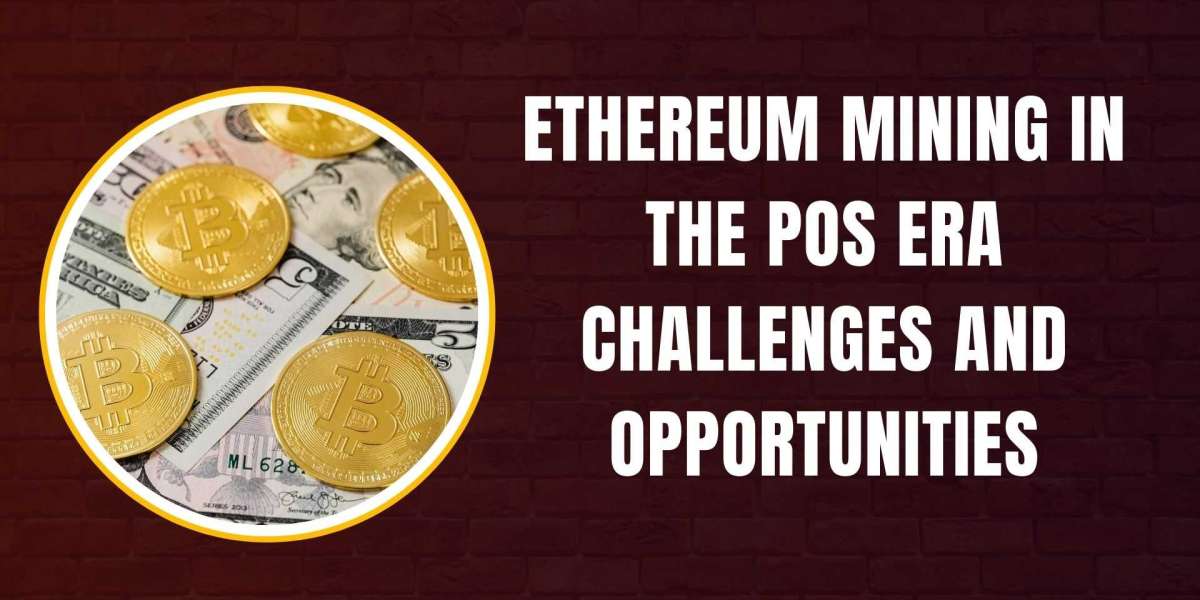The world of cryptocurrency is constantly evolving, and mining is no exception. With Ethereum's transition to a Proof of Stake (PoS) model, traditional ethereum mining has undergone significant changes. But does this mean mining is dead, or are there new opportunities for miners? This article explores the challenges and possibilities in the post-PoW (Proof of Work) Ethereum era.
The Shift to PoS and Its Impact on Ethereum Mining
Ethereum's move to PoS was aimed at making the network more energy-efficient and scalable. Unlike the previous model, where miners used powerful GPUs to validate transactions, PoS relies on validators who stake their ETH to secure the network. As a result, traditional ethereum mining has become obsolete on the Ethereum network. However, this shift has opened doors for miners to explore other profitable alternatives.
Exploring the Best Coin to Mine in the PoS Era
With Ethereum no longer using PoW, many miners are searching for the best coin to mine to keep their rigs operational and profitable. Some potential alternatives include:
Ethereum Classic (ETC): A continuation of Ethereum’s original PoW chain, making it a natural transition for former ETH miners.
Ravencoin (RVN): A decentralized network designed for asset tokenization, which remains mineable with GPUs.
Kaspa (KAS): A fast and scalable PoW blockchain with a strong community and mining support.
Ergo (ERG): A blockchain focusing on financial contracts with efficient mining algorithms.
Each of these coins presents different profitability levels depending on factors like mining difficulty, electricity costs, and hardware efficiency.
Challenges Facing Miners in the PoS Era
While there are still profitable mining opportunities, the shift from ethereum mining to other PoW coins comes with its own set of challenges:
Increased Competition: With more miners switching to other PoW coins, mining difficulty has risen, reducing profitability.
Hardware Optimization: GPUs optimized for Ethereum may not be as efficient for other coins, leading to additional costs for miners.
Electricity Costs: With Ethereum’s transition, miners must consider electricity consumption versus profit when mining alternative cryptocurrencies.
Market Volatility: The value of alternative PoW coins fluctuates, making it difficult to predict long-term profitability.
Opportunities for Miners in the Post-PoW Era
Despite the challenges, there are still exciting opportunities in cryptocurrency mining:
Diversification: Miners can explore multiple coins and switch between them based on profitability.
Staking: Instead of mining, former Ethereum miners can participate in staking by using their ETH to earn passive income.
Cloud Mining: Some miners opt for cloud-based mining services to avoid electricity and hardware costs.
Mining Pools: Joining mining pools can improve earnings stability by distributing rewards among participants.
The Future of Ethereum Mining and Crypto Mining Trends
Although PoW ethereum mining is no longer viable, the broader mining industry continues to adapt. Layer-2 scaling solutions and other blockchain projects are still using PoW, ensuring that mining remains relevant. Additionally, innovations in energy-efficient mining methods and AI-driven mining optimizations could redefine the landscape.
Conclusion
Ethereum’s transition to PoS has undeniably changed the mining industry, making traditional ethereum mining obsolete. However, opportunities still exist for miners willing to adapt. Exploring the best coin to mine, leveraging staking, and optimizing mining strategies can help miners navigate this new era successfully. Whether through PoW alternatives or passive income streams, crypto mining remains an evolving and potentially profitable endeavor.











